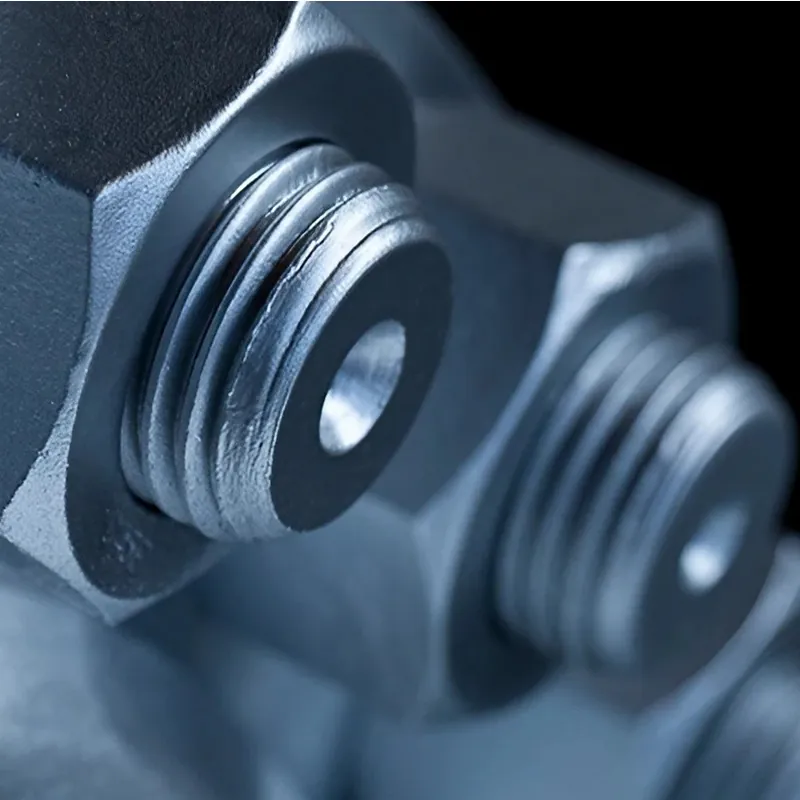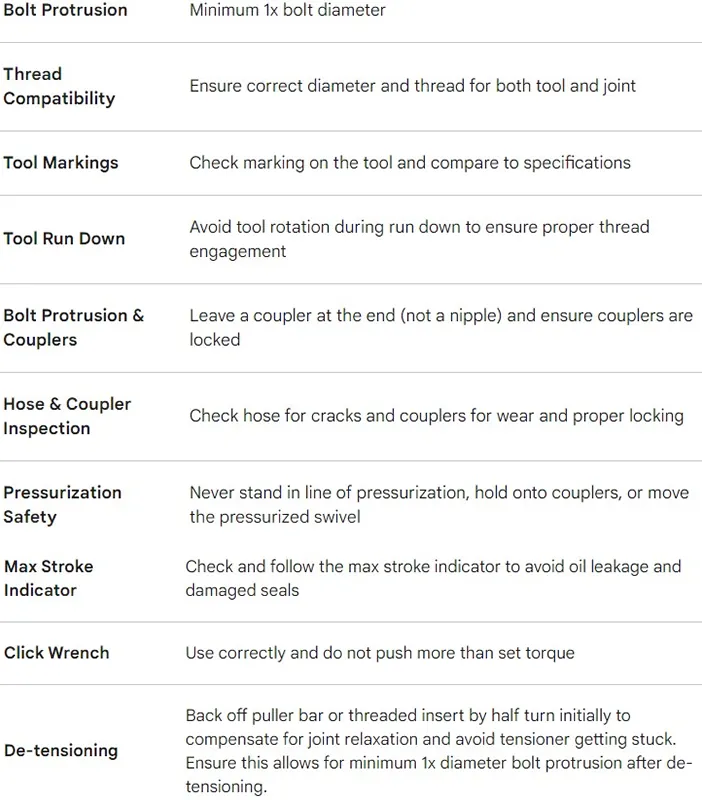The Critical Importance of Bolt Tensioning Safety
Bolt tensioning is critical in various industries, ensuring the structural integrity and safety of machinery, equipment, and infrastructure. Improper bolt Tensioning can lead to catastrophic failures with severe consequences, including:
Equipment failure and downtime: Inadequate bolt tension can result in loose joints, allowing components to move or vibrate excessively, leading to premature wear, fatigue, and ultimately, failure. This can cause costly downtime, production disruptions, and potential safety hazards.
Structural collapse: In critical structures such as bridges, buildings, and offshore platforms, proper bolt tensioning is paramount to ensure the integrity of the entire structure. Insufficient tension can lead to joint loosening, compromising the load-bearing capacity and potentially causing structural collapse.
Personal injury and fatalities: In extreme cases, improperly tensioned bolts can cause catastrophic failures, resulting in serious injuries or even fatalities. For instance, the failure of a bolt in a wind turbine or a pressure vessel can have devastating consequences.

Ensuring Bolt Tension Safety
To safeguard against these risks, it is essential to adhere to strict bolt tensioning procedures and employ the necessary tools and expertise. Key aspects of bolt tension safety include:
Selecting the right bolts: The type, grade, and material must be carefully selected based on the specific application and load requirements.
Proper surface preparation: The mating surfaces of the Bolted Joint must be clean, free of debris, and properly lubricated to ensure even tensioning and prevent galling.
Using calibrated Torque Tools: Accurate torque application is crucial for achieving the desired bolt tension. Calibrated torque wrenches or tensioners should ensure consistent and precise tightening.
Following established procedures: Each bolted joint should have specific tightening procedures outlined in engineering drawings or manufacturer's instructions. These procedures must be strictly followed to ensure proper tensioning.
Regular inspection and maintenance: Bolted joints should be regularly inspected for signs of loosening or wear. Re-tensioning may be necessary if the bolts have lost tension over time.

Conclusion
Bolt tension safety is a non-negotiable aspect of engineering and maintenance practices. By adhering to proper procedures, utilizing the right tools, and employing qualified personnel, the risks associated with improperly tensioned bolts can be effectively mitigated, ensuring the safety, reliability, and longevity of critical machinery, structures, and infrastructure.
Why Choose SAIVS™ as Your Supplier?
With 20 years of industry experience, SAIVS is a leading Chinese manufacturer of high-quality tools, offering competitive pricing and excellent customer service.We pride ourselves on exceptional quality control, extensive experience, and comprehensive after-sales service.